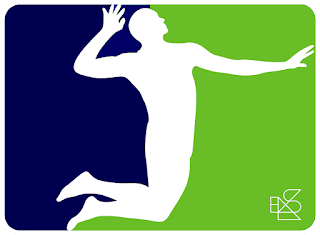Building Blocks and Jigsaw Puzzles
I love analogies. They are very useful as a tool to help athletes understand a concept that might be foreign. Recently I described a particular movement to an athlete as: "its like you are reaching as high as you possibly can to get something off the top shelf of a cupboard". He immediately responded: "I never have to reach to get to the top shelf." (Analogies aren't always perfect.)
There are thousands of analogies to coaching and team building. Three of my favourite are that building a great team is like Lego, its like a Jigsaw Puzzle, its like building blocks.
All have positives and negaties, but Lego is my favourite.
The problem is that not all the pieces are always there with a team, and that it is not simply a question of perseverance. However, starting with a solid framework and having a clear vision are critical.
The problem is similar to the jigsaw puzzle - the assumption that you have exactly everything you need in front of you and you just need the patience to put it all together. Perhaps a better analogy for Lego is that you get given a box full of Lego pieces which may or may not fit together. The only thing you know for sure is that there are more pieces in the box than you really need, so you need to be careful in the use.
(Photo Credit)
There are thousands of analogies to coaching and team building. Three of my favourite are that building a great team is like Lego, its like a Jigsaw Puzzle, its like building blocks.
All have positives and negaties, but Lego is my favourite.
Jigsaw Puzzle
You need to start with a solid framework (border) and a vision for how it will look when you are finished. All the pieces are there and have their own unique place to go, it just needs to be put together. It requires consistency and trial and error, but eventually you know that if you stick with it, it will be completed.The problem is that not all the pieces are always there with a team, and that it is not simply a question of perseverance. However, starting with a solid framework and having a clear vision are critical.
Building Blocks
There is a lot of flexibility and a lot of options. There is more than one way to put them together, and more than one shape that can be built with the blocks. If you can't find a way to build what you want, you can go and get more blocks and add them in with the ones you have. Creativity is important, as well as the ability to knock them down and start again.
The problem many people fall into is that if things aren't quite working it is just a question of adding some more pieces (more training, most analysis, more data collection) so you end up just building and building and building. Or, worse, knocking it down and starting from scratch. The real art is working out which pieces to use and when to use them.
The problem many people fall into is that if things aren't quite working it is just a question of adding some more pieces (more training, most analysis, more data collection) so you end up just building and building and building. Or, worse, knocking it down and starting from scratch. The real art is working out which pieces to use and when to use them.
Lego
The pieces can be arranged in all sorts of different ways to complete the finished model. You can get the basic shape without worrying too much about the details, but you have to put all the pieces together well to clearly fulfil the vision at the start. Many of the pieces are interchangeable, but some have small, specific and important roles.The problem is similar to the jigsaw puzzle - the assumption that you have exactly everything you need in front of you and you just need the patience to put it all together. Perhaps a better analogy for Lego is that you get given a box full of Lego pieces which may or may not fit together. The only thing you know for sure is that there are more pieces in the box than you really need, so you need to be careful in the use.
Pies
All these analogies miss the fact that time is a critical factor in team development. It is not just a question of following a vision and working hard until it all 'comes together'. It has to come together at a particular time, be it the 'finals' or the Olympics.
Another issue missed is that, in team development, the 'perfection' of the vision is not the critical factor. The main thing is that the perfection of the vision at one particular moment in time is better than your opponent's.
Lastly, the number of hours in a day/week/month are an obstacle too big to overcome. Put simply, its not just a question of working harder/longer, you have to work better/more efficiently. If you want to add something into your program that you think is important, you have to decide to eliminate something else that you are currently doing. From that respect, maybe a pie is a better analogy. No matter how much you try you can't cram more into a pie, you have to work hard, get the ingredients just right, set the conditions for it to develop, and wait for it to be ready.
(Photo Credit)



Which analogy takes into account that development functions in parallel? In the building block analogies, you can´t progress until the previous level is completed.
ReplyDeleteThat's why I don't like the building blocks analogy. The implication is that you gradually build each layer onto the last layer. The implication is also that if you keep adding blocks then eventually you will succeed, which I also don't like.
ReplyDelete